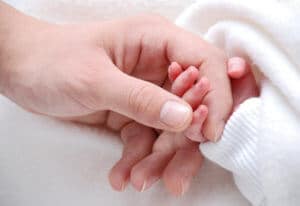How long do sperm survive in different places? What is sperm made of? How many sperm cells does semen contain? How to improve sperm quality? When is the best time for fertilization of the egg?
Everything you need to know about this topic can be found in this article.
Table of contents
Is It All Just Chemistry? Sperm In The Fact Check
Sperm are extremely sensitive and only viable for a few days. The more uncomfortable the environment, the shorter their lifespan. For them to survive, the temperature, ambient humidity, and pH value must be right. If you want to get pregnant or avoid pregnancy, you need some background knowledge.
Some men celebrate a real cult around their elixir of life. But the ability to produce sperm says nothing about a man’s ability to conceive. The milky white to slightly yellowish secretion consists of cellular components that are produced in various glands around the prostate.
Only the seminal filaments themselves develop in the testis. The carrier substance is the seminal plasma, a solution containing hormones and minerals with a slightly acidic pH of 6.4 to 6.8, in which the sperm swim towards their destination – if they are able to do so.
Explanation Of Terms: Sperm, Spermatozoa & Co.
Sperm: This is the name given to the mature male germ cells. They are also called sperm cells or sperm filaments. A single sperm swims with millions of its fellow sperm in the seminal fluid.
Without this fluid, no sperm is viable. The sperm cells move independently in it and are in search of a mature female germ cell. The strongest and fastest sperm prevails and leads to the fertilization of the egg.
The sticky liquid along with the life-giving sperm cells is called semen. A human ejaculate contains 2 to 6 milliliters, and the sperm count varies from individual to individual. On average, one milliliter of sperm contains 20 to 150 million sperm.
Structure And Appearance Of A Sperm
The small sperm cell consists of a head and a tail and is only about 60 micrometers long. To see a sperm, you need a microscope with at least 400x magnification.
Thanks to wonderful educational books, even young children know what sperm looks like. It resembles a tadpole with an oval head, short neck, and a long thin tail. The sperm cell needs this thread to move around.
Its movements in the seminal fluid are reminiscent of the swimming movements of a snake in water. Once the sperm has found an egg that is capable of fertilization, it bores through the outer shell with the tip of its head. Both germ cells fuse with each other and shortly thereafter divide without interruption. New life develops from this cluster of cells.
Chemical Composition Of Sperm
The amount of secretion per ejaculation fills a spoon. Whether dollop spoon, teaspoon, or tablespoon depends on various factors. The ejaculation of the semen is called ejaculation. The thin fluid secretion is interspersed with sticky, milky white threads and visually resembles spit.
This semen consists of 0.5 percent secretion from the accessory sex glands and seminal plasma. This contains mature sperm and white blood cells. The remaining 99.5 percent of the sperm is aqueous seminal fluid.
This is also formed in various glands. Responsible for the cocktail of water, mucus and proteins are the prostate (prostate gland), seminal vesicle gland, Cowper’s gland, and vas deferens gland, as well as the testicles and epididymis.
Healthy Vitamins, Minerals, Proteins?
Semen is healthy? In principle, yes, after all, new life is created with its help. However, only if a viable sperm catches fertile days of the woman to fuse with an egg (or several eggs).
The lightly saline sperm contains traces of zinc, potassium, calcium, magnesium, and citrate, as well as various enzymes. The polyamine spermine provides the aroma. Odor and taste can be influenced by diet and lifestyle, but also by diseases.
In addition, seminal fluid contains hormones such as dopamine, norepinephrine, and tyrosine. Testicles and epididymis, in addition to sperm, also add a pinch of testosterone. The sperm themselves are pure protein, that is, egg white. Vitamins, on the other hand, are not contained in sperm.
How Long Do Sperm Survive?
Outside the body, there is no ideal place. For sperm cells to survive in semen, the temperature, ambient humidity, and pH must be right.
In a nutshell – this is how long sperm survive:
- In the body: up to 5 days (fertile days of the woman), a few hours (infertile days of the woman)
- In water: 2 – 10 seconds
- In the air: 10 – 60 seconds
- In a closed container: a few hours
- Frozen in a test tube: indefinitely
How Long Do Sperm Survive In The Body?
Sperm survive for a maximum of five days in a woman’s body. How long sperm remain fertile depends on whether the woman is currently having fertile days, as well as on the composition of the sperm and the vitality of the individual sperm.
The mature egg is capable of fertilization for less than one day. So the sperm have to hurry, the way to the goal is long. Extrapolated, the time window for fertilization, therefore, lasts at best five to six days per cycle.
To get pregnant, the time immediately before ovulation is ideal – and of course the day of ovulation itself. Sensitive women feel ovulation as a slight tugging in the lower abdomen. It occurs about 10 – 15 days after the first day of menstruation.
One day after ovulation, any chance of fertilization is already lost. The woman’s fertile days are over, the egg is rejected and a new cycle begins.
Fertile Days: How Long Do Sperm Survive?
During the fertile phase of the cycle, sperm survive much longer than on infertile days. Outside of the fertile days, there is an acidic environment in the vagina that kills the male germ cells quite quickly.
The vaginal flora is formed by the cervical mucus, which is supposed to protect the inside of the vagina from germs and injuries. Shortly before ovulation, cervical mucus with positive pH properties develops due to the rising estrogen level in the cervix.
Cervical mucus on a woman’s fertile days is more fluid. It neutralizes the acidic vaginal climate, allowing sperm to move more easily and survive longer. In addition, the mucus contains nutrients that are vital for sperm cells. The sperm can now remain inside the body for up to five days, waiting for the longed-for ovulation.
Fertile Days In Women – How Long Do They Last?
Fertile days sound strange, but that is actually what they are called. The term fertile days of the woman quantifies the period in which a pregnancy is most likely to be achieved.
The egg itself remains “fresh” only about 12 to 18 hours after ovulation and can be fertilized only during this period. Sperm cells have a much longer lifespan of up to five days due to the altered cervical mucus and wait patiently for a mature egg during this time.
However, sperm only survive for several days inside the vagina if some conditions are met. These include a pleasant vaginal climate and the motility and viability of the sperm. These little guys like it are moist and slippery.
Determine fertile days: Accurate analysis of cervical mucus (Billings method) is used to determine ovulation and is considered a natural contraceptive as well as an aid in childbearing.
How Long Do Sperm Survive In Water?
Sperm like it moist and need the seminal fluid to move at all, but in the water itself, they have no chance of survival. Bathwater is a real sperm killer.
Sperm traces in water (bathtub, swimming pool, or bathing lake) are disgusting but harmless. Sperm die immediately in contact with water. Therefore, a woman cannot become pregnant while showering or bathing together if the man ejaculates while doing so.
Unless the man inserts his penis into the woman’s vagina while showering or bathing and she is having fertile days. If you have sex in the shower or bathtub, the sperm ejaculate where they naturally want to go – near a fertilizable egg.
How Long Do Sperm Survive In The Air?
Outside the body, sperm dries very quickly. In the air, sperm cells, therefore, survive only a few seconds to a maximum of one minute. Even in a humid environment, for example in a sauna, the sperm-friendly conditions of the vaginal flora, as well as the right temperature, are missing.
Vital sperm require a temperature of around 37 °C. In contact with air, the watery components of the semen evaporate. If sperm gets onto absorbent materials such as clothing, bed linen, or towels, the same thing happens.
The sperm contained in the air-dried seminal fluid cannot be reanimated. However, such dried traces are still visible for a long time. Under UV light, they glow blue and serve forensic scientists as important evidence in sexual crimes.
How Long Do Sperm Survive On The Hand?
Sperm do not migrate across the skin. But if the fingers are moist with vaginal fluid, for example, sperm remain viable for quite a long time. The seminal fluid protects the sperm for quite a while.
Thus, during intensive petting, they may well enter the vagina and continue to the cervix when the sperm-wetted fingers are inserted into the vagina. Sperm in the hand after a man’s masturbation, on the other hand, is guaranteed not to live long.
Usually, men use tissues or other materials for this purpose. Even if you don’t wash your hands afterward, the semen dries very quickly and any sperm that is still present is killed as a result. No more viable sperm can be found in dry semen.
How Long Do Sperm Survive In A Condom?
The same scenario can theoretically be applied to storage in a condom. Sperm can survive for a few hours in a knotted condom. In this case, the condom acts like a closed vessel and protects the sperm from drying out.
However, this only works with condoms without artificial additives. Coatings and silicones often contain substances that are supposed to kill sperm. This is why a condom is not used for sperm donation (nor a test tube), but a germ-free plastic cup, which is then tightly sealed.
Which immediately answers the question, “How long do sperm survive in a test tube?” If sperm obtained in this way is filled into test tubes and frozen, it has an unlimited shelf life – until it is thawed again.
How Long Do Sperm Survive In The Testicles?
At about 36 degrees Celsius, the climate in the scrotum is ideal for sperm production. The maturation of spermatozoids takes about 10 weeks. After their “production”, the spermatozoa are stored in the epididymis, where they mature and can survive for up to one month.
If they are not used, the body absorbs the cells and makes new ones. Too much heat in the summer, as well as excessive sweating from sports, saunas, or hot baths, can drive up the ideal temperature of the testicle.
Sperm cells do not like too much heat, they become more immobile. The chances of a successful pregnancy decrease. The same is true for too much cold. However, the scrotum is prepared for such adverse conditions. When it is cold, it contracts and guides the testicles into warmer parts of the body; when it is hot, it loosens up again, protecting its precious contents.
Can You Help Your Sperm To Grow?
If despite regular sexual intercourse, a desired pregnancy in the partner fails to materialize, the man can have his sperm quality examined. The man has little influence on environmental factors and his own genes.
But he can still do a lot to get his sperm into top form. A healthy, balanced diet with plenty of vitamins and trace elements, regular exercise, and abstaining from alcohol and nicotine have a positive effect on sperm quality.
Sources
https://www.eltern.de/fruchtbarkeit/wie-lange-ueberleben-spermien












